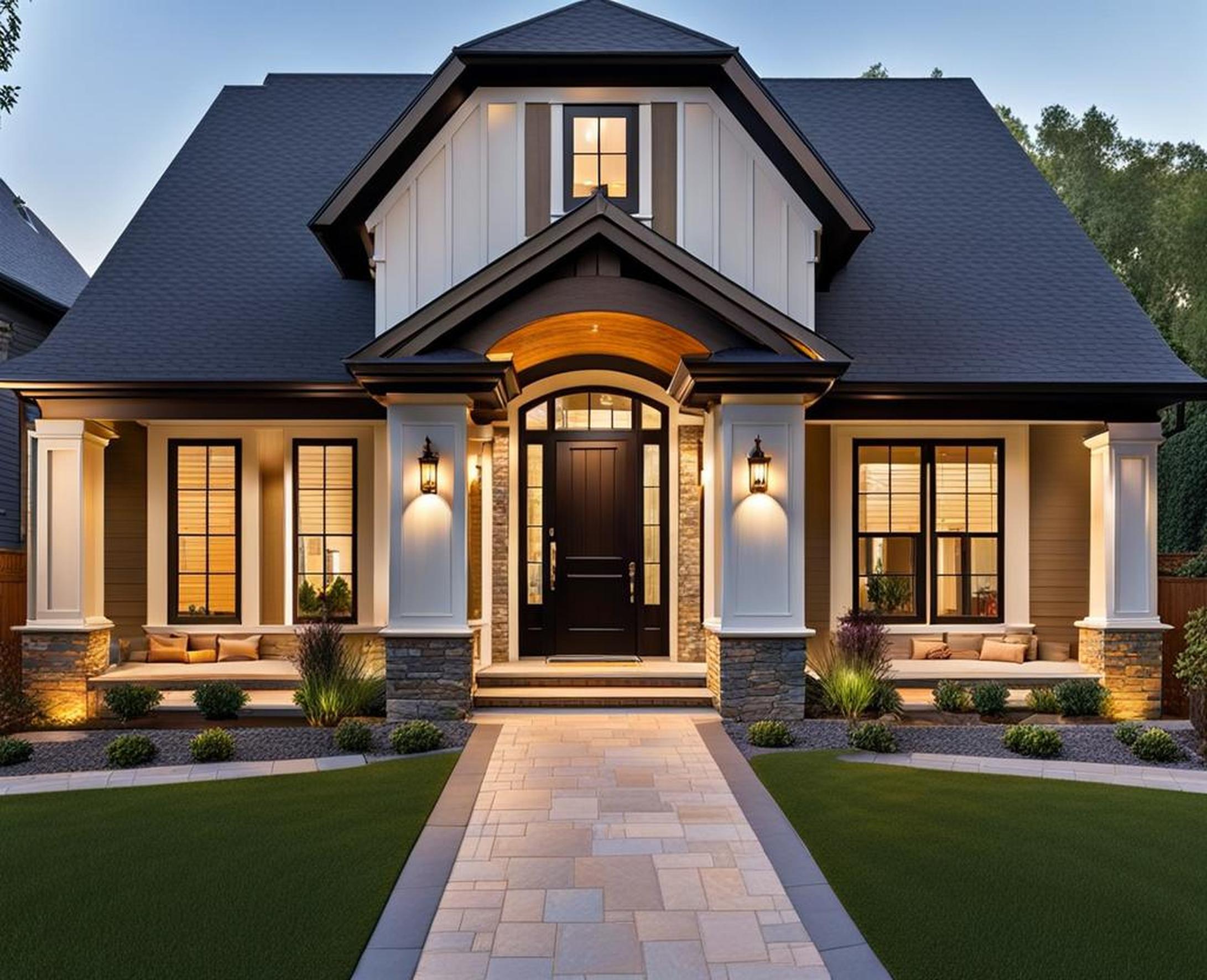Do you ever walk by a house and admire its beautiful architectural details, from the layout to the materials to the colors? Understanding home exterior styles provides insight into your own home’s distinctive aesthetic spirit. Identifying key elements unlocks appreciation for the thoughtfully crafted world around us.
Pinpointing your abode’s artistic genre seems tricky but becomes easy by breaking it down step-by-step. We will examine fundamental components shaping outer flair. You will learn techniques to classify facade features, empowering you to boost curb appeal through harmonious improvements.
Step 1: Analyze the Layout and Shape
A home’s form outlines possibilities. Assessing physical structure spotlight signatures dictating designs. Thoughtful inspection of frame characteristics allows accurate style matching.
Key Architectural Elements to Examine
Several aspects determine layouts and forms. Carefully note:

- Number of stories (single or multi-floor).
- Roof type (gabled, hipped, flat or mixture).
- Symmetry or asymmetry in positioning openings like windows/doors.
- Presence of additional shapes like dormers, overhangs or bay windows.
How Layout Indicates Style
We uncover clues in configurations. For instance:
- Craftsman homes feature low-pitched gabled roofs, front porches and asymmetrical designs.
- Farmhouses classically show steeply-angled gabled roofs and symmetrical facades.
- Queen Anne structures display mixed roof shapes and asymmetrical layouts.
- Contemporary houses often have flat or gently sloping roofs in irregular forms.
Step 2: Study the Exterior Materials
Alongside layout, materials strongly signify genre. Traditionally, certain styles utilize specific building mediums externally. Become an materials expert through noticing fundamentals.
Most Common Outer Building Materials
Typical enclosing substances include:
- Wood siding (types are clapboard, board & batten, shingle).
- Brick or patterned brickwork.
- Stone in various shapes/textures.
- Stucco plasterwork finish.
- Vinyl or other manufactured sidings.
Material Connections to Style
Notable surface preferences emerge among kinds. Like:
- Farmhouses regularly show painted wood siding and shutters.
- Craftsmen homes often appear in wood, stone or stucco.
- Queen Anne’s frequently display wood siding contrasting decorative shingling.
- Contemporary builds tend to use combinations of stucco, wood, brick or metal.
Step 3: Note Key Decorative Details
Embellishing accents further pinpoint genres, conveying visual interests. Study traits to discover if integrate modern simplicity or elaborate ornamentation.
Elements that Embellish Facades
Possible exterior adornments involve:
- Columns (varying sizes, materials and capstone shapes).
- Trim or molding (plain or intricate designs).
- Railings, balustrades and porch supports.
- Entryway surrounds and embellished doorway arches.
- Statement chimneys or chimney pots.
Details Signifying Particular Styles
Specific representational features shine through too. Those highlights include:
- Farmhouses – wraparound porches, louvered shutters.
- Craftsmen – exposed rafter tails, decorative braces.
- Queen Anne’s – patterned masonry, spindlework details.
- Contemporary – oversized windows, little ornamentation.
Step 4: Identify Color Schemes
Paint unifiesmansions or modern titans through palette personalities. Define your true hues from subdued neutrals to vivid statements.
Typical Exterior Color Palettes
Basic spectrum samplers encompass:
- Whites, grays, tans or other quiet neutrals.
- Natural wooden brown tones.
- Deep, saturated accent shades like red, green or navy.
- Vibrant, contrasting colors on details like front doors or window trim.
Color Preferences by Style
Combos align with aesthetics. Such as:
- Farmhouses – bright white siding with black shutters/trim.
- Craftsmen – versatile earth tones like sage green or brown.
- Queen Anne’s – vivid color blocking with red brick walls & blue siding.
- Contemporary – simple, muted neutrals like white, black or gray.
Step 5: Compare Findings to Style Profiles
After gathering impressions from shape to paint, synthesize discoveries. Contrast observations with architectural genre guides showcasing defining details. Finally, pinpoint your home’s dominant dwelling distinction through predominant markers.
Yet combinations create fresh hybrid “neo-eclectic” houses mixing multiple influences seamlessly. If no single style emerges, you likely have an inspired fusion design!
Resources for Further Exploration by Style
Seek out helpful references cataloging stylistic specifics if hungering for deeper design wisdom. Excellent jumping-off points include:
- Architecture history books from libraries or bookstores.
- Online architecture databases detailing elements and evolution.
- Home decor sites defining distinguishing dynasty signatures.
- Real estate visual guides comparing examples across eras.
Through hands-on experience, anyone enhances navigational know-how regarding architectural language. Break apart facade fundamentals systematically to pinpoint your home’s unique essence accurately.
As your discerning eye strengthens, consider fine-tuning curb appeal through minor upgrades harmonizing with the prevailing vibe. Perhaps install wood posts supporting a front gable overhang to reinforce Craftsman charisma, or display artisan wrought-iron balconies matching ornate Queen Anne taste. Understanding style empowers enhancing its fullest statement beautifully.
We hope these insider secrets help illuminate the structural poetry, practicality and personalized potential defining where you live. Let us know if any other mysteries need solving on your dwelling deciphering journey!
